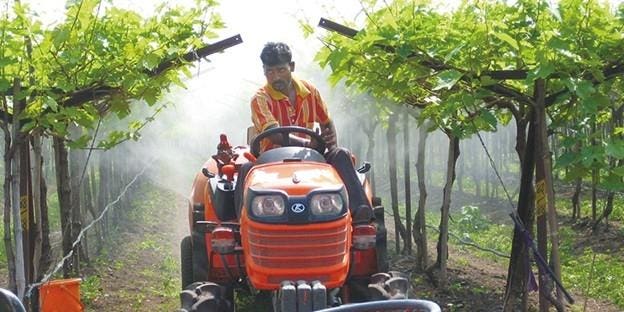Designing For India’s Rural Markets Is About Jobs, Not Products

📝 usncan Note: Designing For India’s Rural Markets Is About Jobs, Not Products
Disclaimer: This content has been prepared based on currently trending topics to increase your awareness.
Spend time in India’s farm towns and you’ll see why innovation can’t be shipped in a crate. People don’t buy “technology”; they hire solutions to do jobs needing to get done, in an environment full of workarounds, constraints, and long memories. If you don’t immerse, you’ll miss the jobs to be done – and the market too.
That point came through vividly in a recent conversation I had with Ranjit Thakur, who plays a central role in product and portfolio transformation at Escorts Kubota Ltd, with active involvement in broader tractor strategy. A $20 billion tractor manufacturer based in Japan, Kubota provides the platform – but Thakur’s approach has been shaped by his own 25 years of experience. He calls it “customer sensing,” and it starts with listening for what isn’t said. A farmer won’t ask for “adequate front reaction of the tractor to avoid lifting on an incline.” He’ll say, “my tractor noses up when I climb out of the riverbed.” The Job to be Done is stable pulling on a gradient – not a spec, not a feature. Translating that into engineering language is the product team’s work; discovering the Job to be Done is everyone’s work.
In my book Jobs to Be Done, I’ve argued that deep customer understanding is essential to framing Jobs correctly. That’s doubly true where literacy is uneven, infrastructure is patchy, and distribution costs punish needless bells and whistles. Thakur described innovation maturity as judgment: knowing what to build, what to drop, when to pause, and when to scale. Drawing on decades in product management, Thakur explains that this judgment guided his team’s early stance on electric tractors – the concept was introduced in India nearly eight years ago, when he and colleagues at Escorts Kubota Ltd began experimenting with EV prototypes – but he resisted premature scaling until the ecosystem was ready. His mantra is that the market is dynamic, so your plan must be, too.
Deep Immersion First, Quantification Later
Thakur and his team use a mixed-method cadence I wish more firms adopted. Early work is open-ended and in situ—ride-alongs, field checks, and dialogues at the farm. As patterns emerge, they move to structured techniques like MaxDiff and conjoint to force tradeoff clarity. In other words, qualitative to discover, quantitative to decide. As Thakur reflects from his career in product roles, each method answers a different question, so this sequence is critical.
Kubota has invested in deeply understanding its rural customers in India.
Kubuta
Behavior Change > Feature Lists
Two non-tractor examples show what it looks like to design for Jobs to be Done—and the behavior changes that unlock them.
1) Sarvajal’s water ATMs: pay-per-use clean water, designed for trust. Piramal Sarvajal didn’t try to sell water purification boxes. This Indian NGO built a decentralized, solar-powered network of purification units and “water ATMs” that dispense affordable water via prepaid smart cards or coins. Each ATM is cloud-connected for remote monitoring; every transaction is logged, enabling predictive maintenance and transparent pricing. The franchise model creates local ownership and service accountability. What sounds like a tech story is actually a behavior story: move households from irregular, dubious sources to reliable, on-demand water by reducing hassle, raising transparency, and making payments feel familiar (recharging a smart card like a mobile).
2) Stellapps’ dairy stack: digitizing milk, then money. The Indian agritech business Stellapps began by instrumenting milk collection – automated milk analyzers, data capture at village centers, and cloud back-ends to boost quality and shrink leakage. Once trust in measurements and identity was established, the company launched mooPay, a direct-to-farmer digital payment layer for cooperatives. This was a systems shift based on understanding how to change longstanding farmer behaviors.
Four Field Rules for Rural Product Strategy
Over years working in emerging markets (and writing about them, as in this Forbes piece I wrote with Clayton Christensen), I’ve found four rules that separate the pilots from the scale-ups. Thakur’s experience, and the other stories above, reinforce them.
1) Translate complaints into Jobs to be Done. “The tractor noses up on a slope” is not a spec request; it’s a job statement about safe, predictable traction. Likewise, “milk payments take too long” is about smoothing household cash flow, not “let’s build an app.” Map the causal chain from context → struggle → successful result → enabling features.
2) Mix methods with intent. Don’t over-rely on focus groups (articulation can be limited) or on surveys (false precision). Observe the work; talk one-on-one; then quantify tradeoffs when choices are real. The Kubota team cycles through all three – field visits, focused group discussions, and structured quant – because each answers a different question.
3) Decide what not to build, early and explicitly. In my book Costovation, I’ve written that smart cost is a growth strategy: deep understanding is cheaper because you stop building what won’t change the outcome. Thakur operationalizes that with a portfolio discipline—ideas are easy to start and hard to kill, so they schedule the “kill” conversations upfront. His rubric (build, drop, pause, or scale) keeps resources aligned with market reality.
4) Treat sensing as a weekly habit, not an annual offsite. Rural markets seldom shift overnight, but they drift constantly with factors such as credit norms, crop cycles, local politics, weather patterns, and the moves of large buyers. Kubota’s cadence of regular calls with farmers, dealers, and even competitors’ channel partners means nothing big happens “out of the blue.” You’re resilient not because you predict perfectly, but because you notice early.
The Temptation to Over-Generalize
Western exporters sometimes look for “the India playbook.” There isn’t one. There are only Jobs to be Done and their contexts to understand. For tractors, that might be climbing out of a riverbed without tipping; for water, buying safe liters without waiting for a tanker; for milk, getting paid fast and fairly when documentation is imperfect. When we define products by Jobs to be Done – and practice relentless, humble sensing – then we earn the right to scale.
Technology is the easy part. The hard part is changing the way people get their Jobs done. That’s where deep immersion pays off. And that’s where companies that deeply understand Jobs to Be Done will always have an edge.




